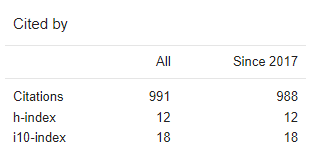Policy on the Provision of Contraceptive Devices for School-Aged Children and Adolescents from the Perspective of Legal Utility
The policy on providing contraceptive devices for school-aged children and adolescents in Government Regulation No. 28 of 2024 on Health does not clarify the qualifications of children and adolescents eligible to receive contraceptive provisions, allowing room for negative interpretations. This study aims to analyze the underlying considerations of the policy while assessing whether the provision of contraceptive devices for school-aged children and adolescents aligns with the principle of utility as a legal objective. This research employs a normative legal method using statutory, conceptual, and comparative approaches. The findings indicate that Indonesia is still striving to reduce the high maternal and infant mortality rates. Given the still-high prevalence of child marriage, this policy is intended to lower maternal and infant mortality rates caused by high-risk pregnancies among adolescent couples engaged in early marriage. In terms of fulfilling fundamental human rights and the significant positive impact of the policy, it essentially reflects the aspect of legal utility.
Amin, Rahman, Hukum Perlindungan Anak dan Perempuan di Indonesia (Penerbit Deepublish 2021)
Anieq Mumthi’ah Al Kautzar et al., Kesehatan Perempuan dan Keluarga Berencana (Yayasan Penerbit Muhammad Zaini 2021)
Indien Winarwati dan Mufarrijul Ikhwan, Buku Ajar Filsafat Hukum (Scopindo Media 2019)
Peter Mahmud Marzuki, Penelitian Hukum (Prenada Media 2023)
Syarifuddin, Hukum Jaminan Perlindungan Perempuan dan Anak (Kencana 2023)
Bambang, Eko, ‘Peranan Edukasi Kesehatan Reproduksi Pada Remaja’ (2024) 1 Federalisme: Jurnal Kajian Hukum dan Ilmu Komunikasi 46.
Khatimah, Husnul, Yunita Laila Astuti, Vini Yuliani, ‘Pengambilan Keputusan Penggunaan Kontrasepsi di Indonesia (Analisis Data SDKI 2017)’ (2022) 2 Journal of Midwifery Science and Women’s Health 68.
Pratiwi, Endang, Theo Negoro, dan Hassanain Haykal, ‘Teori Utilitarianisme Jeremy Bentham: Tujuan Hukum atau Metode Pengujian Produk Hukum’ (2022) 19 Jurnal Konstitusi 273.
Riyanti, Neni, Risa Devita, Dwi Wahyuni, ‘Analisis Faktor yang Berhubungan dengan Risiko Kehamilan pada Ibu Hamil’ (2021) 6 Jurnal Aisyiyah Medika 175.
Supriyadi, Mohammad Wangsit, et.al., ‘Pokok Pikiran dan Sumbangsih Fundamental Gustav Radbruch terhadap Perkembangan Ilmu dan Hukum’ (2025) 7 Quantum Juris: Jurnal Hukum Modern 404.
International Centre for Missing & Exploited Children (ICMEC), ‘Gillick competency and Fraser guidelines: Balancing children’s rights with the responsibility to keep them safe from harm’ (ICMEC, 2019) <https://www.icmec.org/wp-content/uploads/2019/04/gillick-competency-factsheet.pdf>, dikunjungi pada 04 November 2024.
Komnas Perempuan, ‘Pernyataan Sikap Komnas Perempuan tentang Ketentuan Penyediaan Alat Kontrasepsi Bagi Anak Usia Sekolah dan Remaja dalam PP No. 28 Tahun 2024 Tentang Kesehatan’ (Komnas Perempuan, 2024) <https://komnasperempuan.go.id/pernyataan-sikap-detail/pernyataan-sikap-komnas-perempuan-tentang-ketentuan-penyediaan-alat-kontrasepsi-bagi-anak-usia-sekolah-dan-remaja-dalam-pp-no-28-tahun-2024-tentang-kesehatan>, dikunjungi pada 26 Agustus 2024.
School Media, ‘Indonesia Peringkat Empat Kasus Kawin Anak di Dunia, 25,52 Juta Anak Menikah Usia Dini’ (School Media, 2023) <https://news.schoolmedia.id/lipsus/Indonesia-Peringkat-Empat-Kasus-Kawin-Anak-di-Dunia-2552-Juta-Anak-Menikah-Usia-Dini-3898>, dikunjungi pada 30 Oktober 2024.
Sienny Agustin, ‘Hamil Usia Muda, Kenali Berbagai Resikonya’ (alodokter, 2023) <https://www.alodokter.com/hamil-muda-akibat-hubungan-intim-dini>, dikunjungi pada 12 November 2024.
The National Health Service (NHS), ‘Where to get contraception’ (NHS, 2024) <https://www.nhs.uk/contraception/where-to-get-contraception/>, dikunjungi pada 04 November 2024.
United Nations Children’s Fund, ‘Child Marriage’ (Unicef, 2023) <https://data.unicef.org/topic/child-protection/child-marriage/>, dikunjungi pada 13 Oktober 2024.
World Health Organization, ‘Adolescent Pregnancy’ (WHO, 2024) <https://www.who.int/news-room/fact-sheets/detail/adolescent-pregnancy>, dikunjungi pada 27 Agustus 2024.
Undang-Undang Nomor 17 Tahun 2023 Tentang Kesehatan (Lembaran Negara Republik Indonesia Tahun 2023 Nomor 105)
Undang-Undang Nomor 17 Tahun 2007 Tentang Rencana Pembangunan Jangka Panjang Nasional Tahun 2005–2025 (Lembaran Negara Republik Indonesia Tahun 2007 Nomor 33
Peraturan Pemerintah Nomor 28 Tahun 2024 Tentang Peraturan Pelaksanaan Undang-Undang Nomor 17 Tahun 2023 Tentang Kesehatan (Lembaran Negara Republik Indonesia Tahun 2024 Nomor 135)
Peraturan Menteri Kesehatan Republik Indonesia Nomor 21 Tahun 2021 Tentang Penyelenggaraan Pelayanan Kesehatan Masa Sebelum Hamil, Masa Hamil, Persalinan, dan Masa Sesudah Melahirkan, Pelayanan Kontrasepsi, dan Pelayanan Kesehatan Seksual (Lembaran Negara Republik Indonesia Tahun 2021 Nomor 853)
Peraturan Menteri Kesehatan Republik Indonesia Nomor 21 Tahun 2020 Tentang Rencana Strategis Kementerian Kesehatan Tahun 2020-2024 (Lembaran Negara Republik Indonesia Tahun 2020 Nomor 914)
Copyright (c) 2025 Asfa Asfiais Sholihah, Astutik

This work is licensed under a Creative Commons Attribution 4.0 International License.
Jurist-Diction (P-ISSN 2721-8392, E-ISSN 2655-8297), published by Universitas Airlangga, is licensed under the Creative Commons Attribution 4.0 International License (CC BY 4.0).
This license permits users to:
- Share – copy and redistribute the material in any medium or format;
- Adapt – remix, transform, and build upon the material for any purpose, including commercial use.
These freedoms are granted under the following conditions:
Attribution – You must provide appropriate credit, include a link to the license, and indicate if any changes were made. This may be done in any reasonable manner, but not in a way that suggests the licensor endorses you or your use.
No additional restrictions – You may not apply legal terms or technological measures that restrict others from exercising the rights granted under the license.
Note: As of Volume 5, No. 1 (2022), Jurist-Diction has adopted the Creative Commons Attribution 4.0 International License (CC BY 4.0), replacing its previous license (CC BY-NC-SA).


















